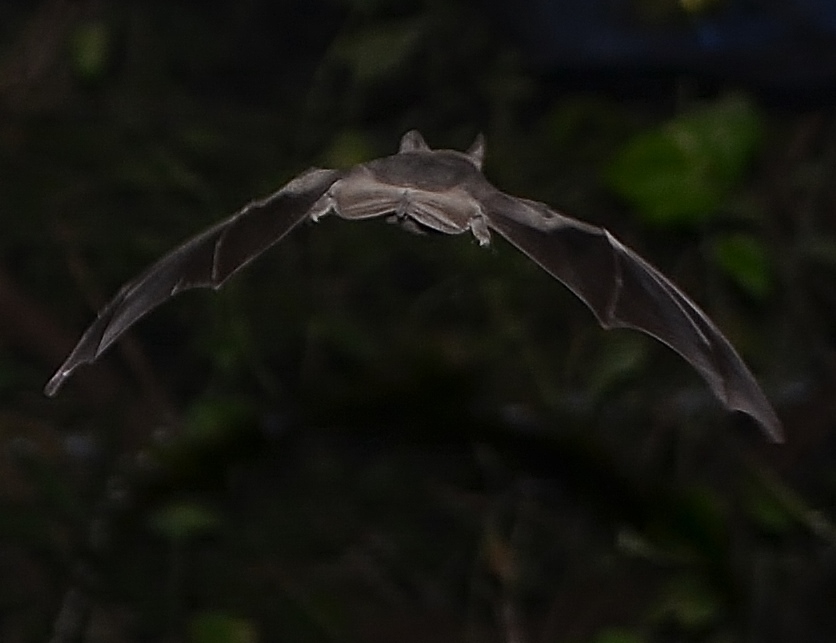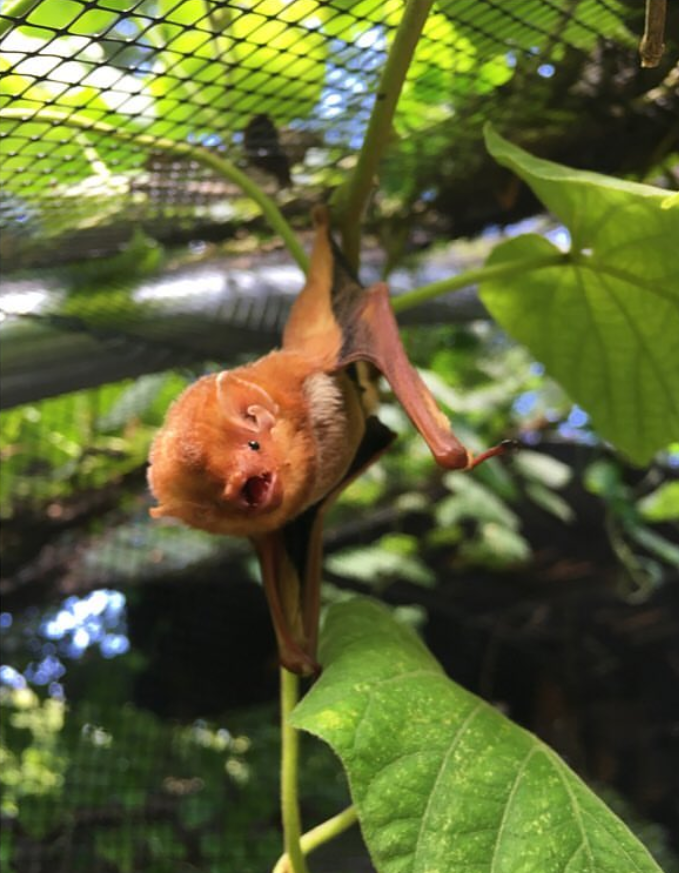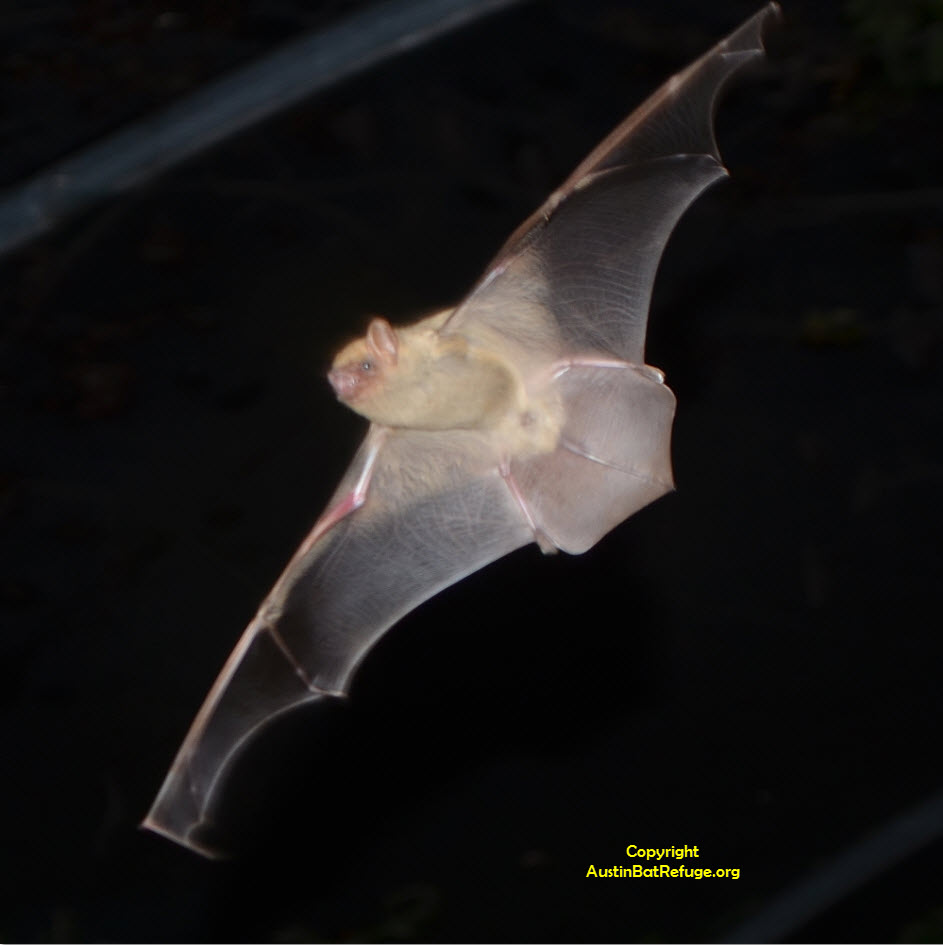Tri-colored sonogram / sounds of silence
So our tri-colored bat checks out clean under the black light, no orange fluorescence, no spotting in normal light, we think she’s clean for Pd, no White-nose Syndrome.
She’s not sustaining flight however. She flew the length of the flight cage once but landed and has only taken short flights since then. It is said that they are sporadic flyers with a short elliptical flight patterns, so this may be normal. But she did not fly away when she had the opportunity as we were collecting her, so we’ll need to check her out some more to make sure she has the strength a bat needs to survive in the wild.
On the left is the recording of her call as she made that one flight down the length of the flight cage. On the right is a call from the reference library of a tri-colored bat in Mammoth Cave State Park in Kentucky from back in 2007. Tragically, tri-colored bats in that area have been decimated by White-nose Syndrome, numbers have plummeted 80% since it’s arrival in 2013 and that song is likely not heard very often in that area nowadays. How sad to think of all the bats that have perished from this terrible disease. And awful to think we’ll likely be dealing with it ourselves in a year or two.

She weighs 8 grams! So surprising that a tiny bat would weigh so much. She looks about the same size as our evening bat Zonker, not way smaller as we would have expected.













